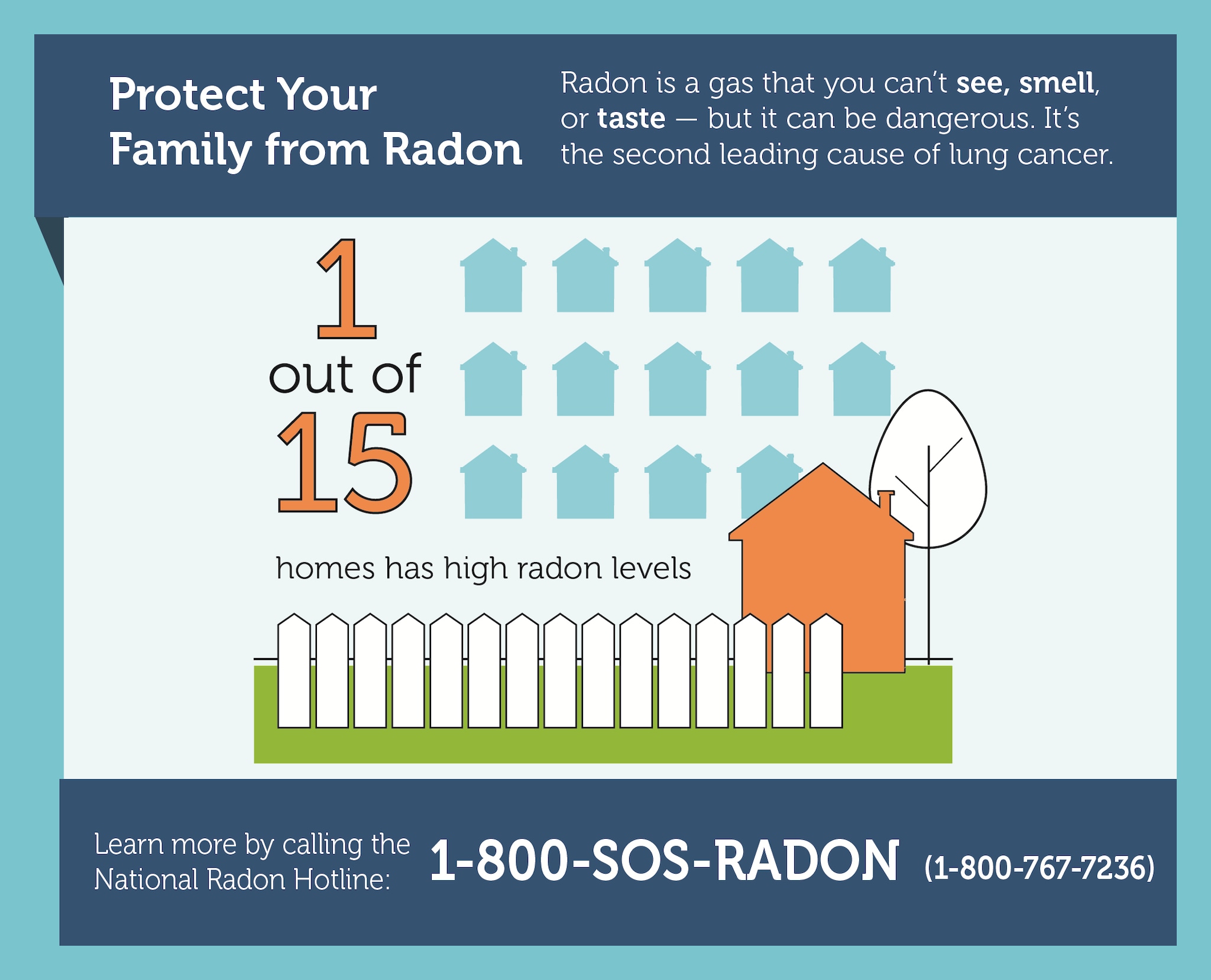At a glance
Use these graphics to raise awareness about radon. You can use these graphics in presentations, in documents, or on social media.

Sharable images

Suggested alt text: Protect Your Family from Radon. Radon is a gas that you can't see, smell, or taste – but it can be dangerous. It's the second leading cause of lung cancer. 1 out of 15 homes have high radon levels. Learn more by calling the National Radon Hotline: 1-800-SOS-RADON. (1-800-767-7236).
Suggested caption: 1 in 15 homes have high radon levels. The good news is that you can check your home with a simple at-home test kit — and if your home has high levels of radon, you can take steps to fix it. Learn more at https://www.epa.gov/radon/find-radon-test-kit-or-measurement-and-mitigation-professional

Suggested alt text: Radon and Smoking: A Dangerous Combination. If you live in a home with high radon levels, smoking raises your risk of lung cancer by 10 times. Learn more by calling the National Radon Hotline: 1-800-SOS-RADON. (1-800-767-7236).
Suggested caption: Radon is the 2nd leading cause of lung cancer in the U.S., after cigarette smoking. If you live in a home with high radon levels, smoking raises your risk of lung cancer even more. Learn more about radon and cancer. Learn more at https://www.cancer.gov/about-cancer/causes-prevention/risk/substances/radon/radon-fact-sheet

Suggested alt text: Protect Your Family from Radon. Radon is a gas that you can't see, smell, or taste – but it can be dangerous. It's the second leading cause of lung cancer. Radon is in the ground naturally. But sometimes it gets into homes through cracks in the floors or walls. Learn more by calling the National Radon Hotline: 1-800-SOS-RADON. (1-800-767-7236).
Suggested caption: Radon is a gas that you can't see, smell, or taste. Over time, it can build up in your home and cause health problems. Learn more about radon and how it can affect your health.
